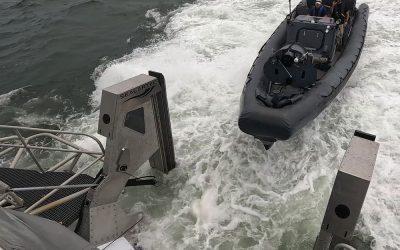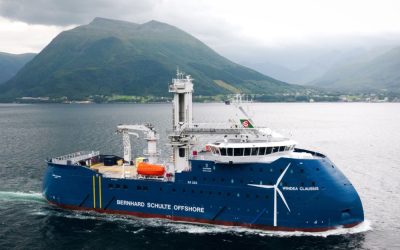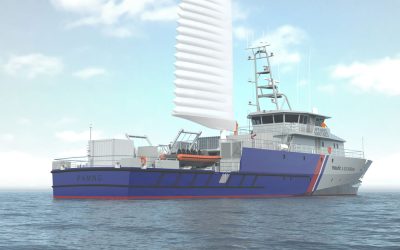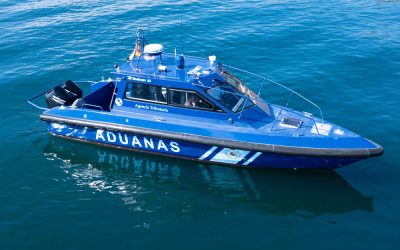A UK-based collaboration between USV developer HydroSurv, naval architect and designer BMT and South Devon College is nearing completion of a project set up to assess the benefits of electric USV operations in ports and harbours.
The ‘ROC + DOCK’ initiative has involved shoreside pilots remotely controlling South Devon College’s unmanned training vessel USV Dart – a 1.58m-long HydroSurv REAV-16 model, deployed on the River Dart—from a remote operations centre (ROC) on college grounds. Additionally, the partners have been trialling a remotely monitored, solar panel-equipped docking station, developed to recharge the USV with pure renewable energy – and all without manual intervention.
Funded through the Innovate UK Marine & Maritime Launchpad, the project aims to enable “true force multiplication of resident USVs operating across geographically separated coastal sites” while demonstrating “an integrated, end-to-end workflow that could transform how short-range environmental monitoring, inspection and surveillance missions are planned and executed – all from a centralised facility”, HydroSurv says.
ROC + DOCK commenced in early September, when the prototype docking station was deployed on the river. This station, designed internally by HydroSurv, is fitted with an automated mooring latch and has been designed to enable fully hands-off recovery of the USV, and recharging of its lithium-ion batteries. HydroSurv tells The Naval Architect: “The docking station’s power system is capable of charging [our] latest [2.5m-long] REAV-25 USV at up to 50A, to enable rapid replenishment. However, in practice, the USV will be recharged over longer periods when the vessel remains in the docking station for a few days at a time.”
At present, the docking station is designed for single-vessel support. HydroSurv adds: “The docking station control software is accessible to the vessel operator, providing the latching and unlatching system, monitored through a proximity sensor system. Charging is enabled through a contact charging system.”
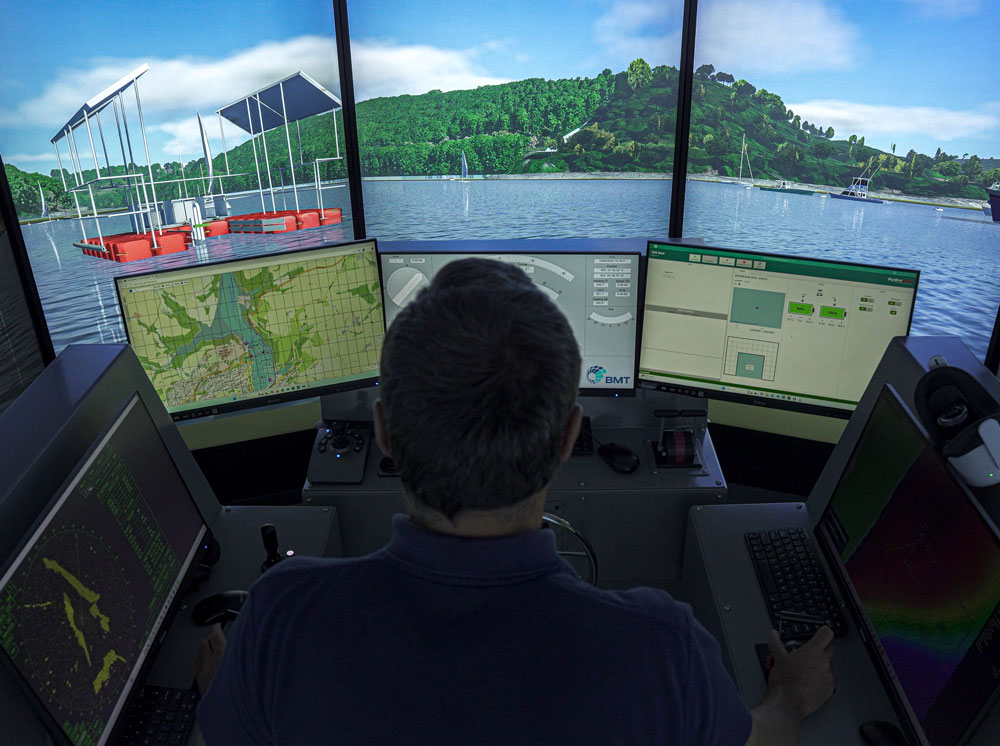
BMT’s Rembrandt simulator was integrated with HydroSurv’s vessel control software, enabling remote operator training and direct control of ‘USV Dart’
Back at the ROC, pilots remotely launched and navigated USV Dart by integrating HydroSurv’s vessel control software with BMT’s Rembrandt simulator – the latter tool more traditionally used for crewed vessel training. HydroSurv elaborates: “This capability – enabling operator training in a virtual environment that precisely replicates the vessel’s handling characteristics, before transitioning to live control – represents a significant advance in ROC design. It supports both the modernisation of maritime training syllabuses and the technical evolution of uncrewed operations facilities, with enhanced human factors and situational awareness at their core.
“Being a conventional vessel simulator, the spread is relational to the layout of a commercial vessel or workboat bridge, as opposed to more conventional screen layouts seen with remotely operated uncrewed vessel spreads.”
The River Dart trials have so far included water quality assessment missions involving pre-planned routes of up to 10km in line length from the docking station. These runs were based on standardised tasks from HydroSurv’s parallel ‘Smart Waters, Clean Ports’ project, launched last year, in which REAV-16 USVs transited rivers and estuaries around the ports of Dartmouth, Falmouth and Plymouth to assess local water pollution levels.
Summing up the USV Dart trials so far, HydroSurv states: “A two-person team can now execute multiple missions from a single facility, across dispersed coastal sites, without the need for local on-water support.” HydroSurv is now looking to further develop the integration between the USV and the Rembrandt simulator. This will likely include “enhancing the live view capabilities from an improved situational awareness spread, possibly with larger seagoing systems; and [evaluating] human factors for one-to-many USV supervision approaches”, the group says.
The docking station, meanwhile, will be honed to handle HydroSurv’s larger, seagoing USVs, “as part of an onward development roadmap”, HydroSurv adds. In November, as the project enters its final phase, the group aims to identify potential savings in terms of reduced crewing/support vessel costs and emissions through using the ROC, USV and docking station, compared with typical manned vessel set-ups.

